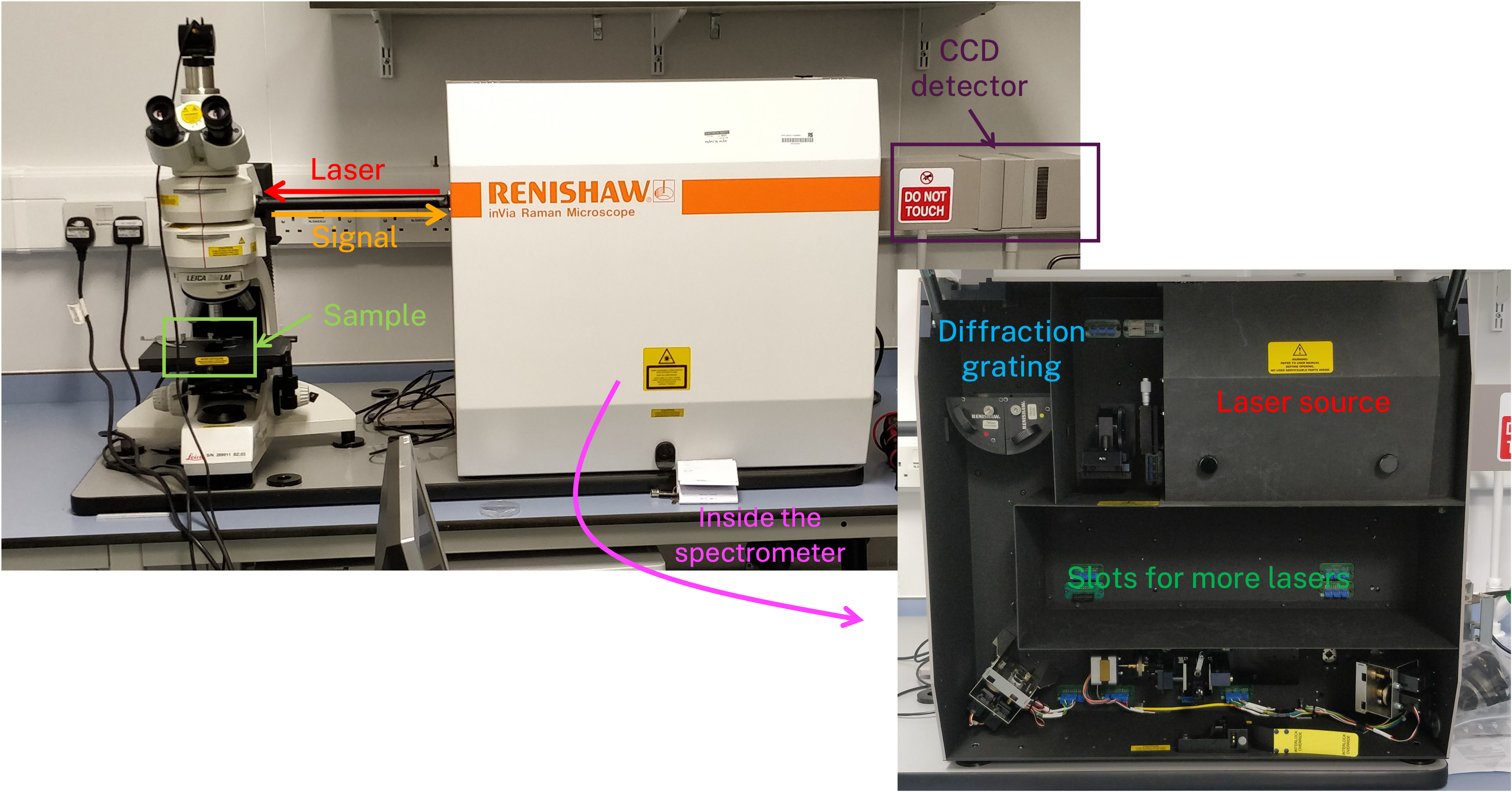Spectroscopy
Let's learn about how to use light to identify elements!
Welcome to this workshop post! I’d like to share a spectroscopy workshop I ran a few times during my PhD at the University of Southampton.
Before defining the word spectroscopy, let’s talk a bit more about light in general. Light is a form of energy that travels in waves. These waves have different lengths (wavelengths), each having a different colour. However, we don’t see the different colours with our eyes, because when mixed all together, they form white light. It is possible to split the light back into its different wavelengths, by diffracting it.
When light travels through matter, some of it is absorbed. Therefore, the light that comes out of the matter is different from the light that went in. It is possible to look at these differences by analysing the material’s light spectrum. This is the aim of spectroscopy.
The word spectroscopy can be divided into two:
- Spectro: which is linked to the word spectrum
- scopy: which means to examine Therefore, combined, spectroscopy means to examine the spectrum of light.
Spectroscopy is very useful as it allows scientists to identify elements in a sample without necessary destroying it for example. I was doing this during my master thesis, I focused on Raman spectroscopy to study graphene. Here is a photo of the inside of a Raman spectrometer:

I placed my sample in the microscope (micro (small) + scope (examine) = tool to examine small objects) so I could get a nice view of it. Then I sent some light on it. My sample would absorb some light and reflect the rest. This reflected light would go back to the CCD detector, which recorded the spectrum. I could then analyse the measured spectrum to get information about my sample composition.
This workshop goes into more detail on all these concepts. The aim is to learn about light diffraction and spectroscopy.
In this workshop, students will:
- make a spectroscope
- use their spectroscopes to observe differences in various light sources
- learn who uses spectroscopes and why
- discover the working principles of spectroscopes (diffraction)
Right below, you will find a presentation to support to delivery of the workshop, some teacher notes on how to run the workshop, and a spectroscope template. This template is only an option, it is also possible to make a spectroscope from scratch with a cardboard tube. More detailed instructions are available in the teacher notes.